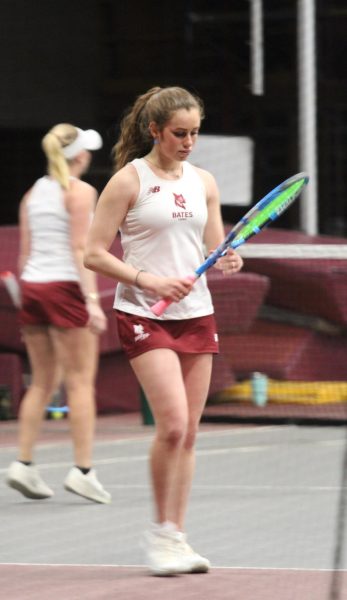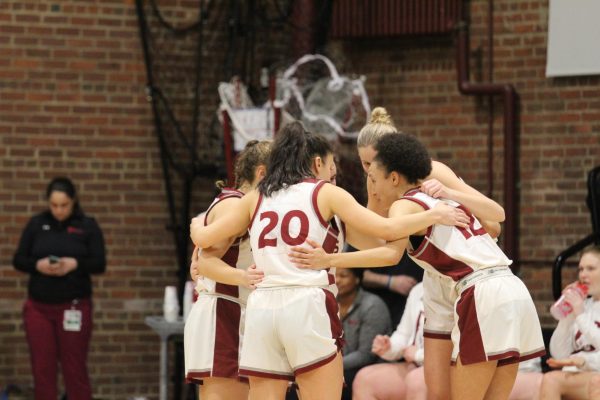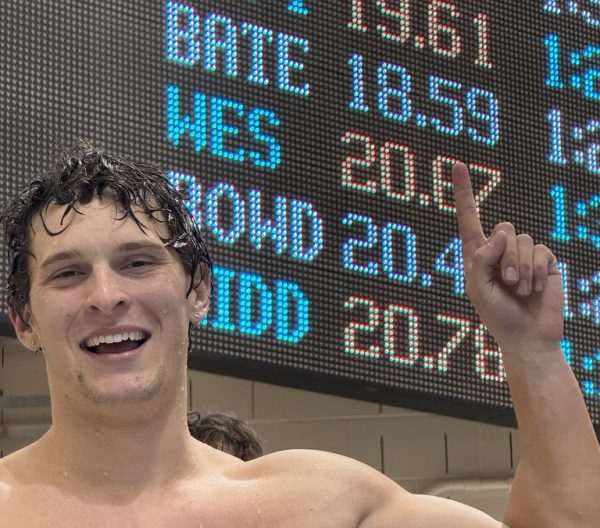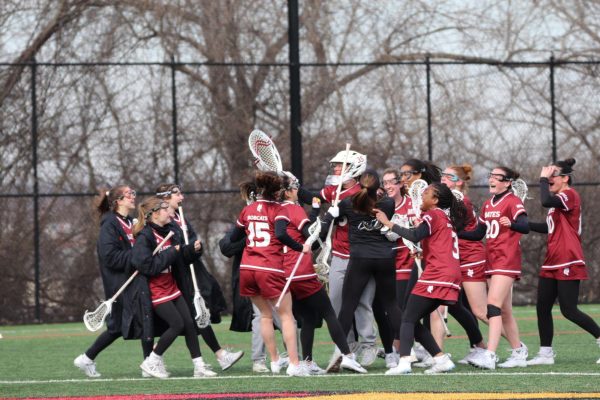Hodin’s Hoops Corner: Three Preseason Question Marks for Each Bates Basketball Team
Bates Women’s Basketball
1) Can they keep up the offensive output?
Last season, the Bates women’s basketball team was an offensive powerhouse; they scored the second most points in the NESCAC at 66.7 per game, featuring offensive contributions from a number of different players. Mia Roy and Ariana Dalia (graduated) and Briana Gadaleta (injury) will all be significant offensive losses; Roy’s three-point shooting and fast-break ability, Dalia’s offensive rebounding and finishing ability and Gadaleta’s low-post moves and mid-range jump shot will all be sorely missed. However, leading scorer Meghan Graff and returning junior Morgan Kennedy should both have very solid offensive production. Graff can score from all three levels and will have a chance to break tons of scoring records this season. Kennedy, who battled an injury last season, will definitely have a larger role offensively with her ability to stretch the defense from three and score at the rim.
2) Rebounding?
Rebounding was the identity of last year’s Bates squad; they led the NESCAC in both total rebounds (43.1) and offensive rebounds (16.3) per game. Dalia, Taylor McVeigh and Gadaleta were all excellent in this aspect, attacking the glass with intensity and aggression throughout the entire season. This year, though, without those three front-court studs, Bates will have to find another way to handle the boards. It is unrealistic to think that anyone can step in and immediately fill the shoes of those three players, but Coach Montgomery’s philosophy of attacking the glass should definitely lead to another solid rebounding season for the ‘Cats.
3) Who will start?
This is the big question mark here because I literally have no clue who cracks the starting lineup. Graff is locked in, and Morgan Kennedy is probably locked in. After that, there are major minutes to go around, so it’ll be exciting to see who Montgomery fires up for the first contest of the season against Tufts on Nov. 12. I could imagine literally anyone getting those final three spots, and it’ll probably be a work in progress as the ‘Cats try to figure out who works best to complement Graff and Kennedy.
Bates Men’s Basketball
1) Will the scoring be more balanced?
Last season, Steph Baxter carried a very large scoring load. He led the NESCAC in scoring with 20.4 points per game. However, (I personally believe) that a more balanced scoring attack would be beneficial for the Cats. Opponents peppered Baxter with their best perimeter defender, and that caused Baxter’s efficiency to dip a bit; he shot 41 percent from the field and only 30 percent from three. I expect Bates to get Baxter off the ball more and run more of a team-centric offense, which should allow players like Jahmir Primer, Grant Nadeau and Simon McCormick to get more offensive opportunities. One thing is for sure: when teams come to play Bates, Steph Baxter will be their number one focus, and that should open up space for literally everyone else.
2) Who plays on the front court?
Without Omar Sarr and Jacob Iwowo on the team this season, Bates will have lots of new faces on the front court. They have tons of guards who can handle, shoot and make plays, and they also have a significant number of wings who can do the same. But, they are lacking a lot of height and experience in their big men. Stephen Ward (can we start calling him “baby Draymond”?) will definitely be a key piece here; he plays with great toughness and can hold his own with bigger forwards. I also think Devin Harris will likely have a breakout season. It’s only a matter of time before Bates figures out how to effectively utilize his unbelievably athletic ability on both ends (as a shot blocker and a rim finisher). I also expect Cam Riley, as well as a number of first-years, to get solid minutes at the big-man spot.
3) Will Bates survive with this many small guards?
Truthfully, I think the answer to this question is a resounding yes. Normally, the issue with playing multiple small guards would be defense. However, Baxter, Primer and McCormick are all above-average perimeter defenders who offset their lack of size with great lateral quickness. Each of them can hold their own and guard larger players. Offensively, I don’t see many issues with playing a bunch of smaller players; each of them is able to create offense, shoot the three-ball, and find open teammates. I’ll be curious to see how coach Furbush juxtaposes this back-court height with the team’s frontcourt. Will he try to go larger with guys like Riley and Harris? Or, will he really commit to small-ball and play more Stephen Ward at the five? Shall be very interesting!
Your donation will support the student journalists of Bates College and help us cover our annual website hosting costs.







